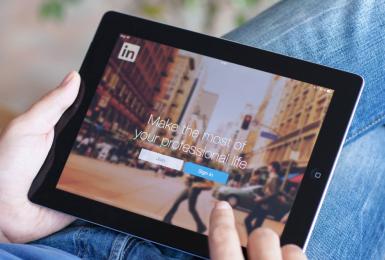A Reopening Checklist: When Employees Return to Work Post-Pandemic
Nobody could have predicted or prepared for the major workplace shifts we experienced in 2020. Abrupt stay-at-home mandates enforced in the wake of COVID-19 left many organizations struggling to efficiently transition from “business as usual'' to a remote work environment.
This unprecedented shift was fueled by fear and urgency, causing strain on people’s professional and personal lives. The speed at which companies had to close their offices and adapt operations and procedures to an online environment meant businesses didn’t have the ability for advanced and detailed planning for such a drastic transition.
In 2021, as it becomes safer to return to an in-person work environment, companies have an opportunity to create a strategic, detailed plan for reopening the workplace post-pandemic. This time around, companies can give employees more time and notice of what to expect.
Part of this planning means acknowledging the shifting norms that took place during the pandemic, as operations likely won’t be “business as usual.” Employers have health and hygiene, work-from-home policies, and other post-COVID expectations to consider. Above all, health and safety should remain the guiding light for developing well-informed strategies for resuming in-person operations.
To help guide your business through this transition, consider abiding by the following reopening checklist. Keep in mind that circumstances will vary depending on your organization, which in turn, may require a different response in planning for reopening.
Safety Protocols
In 2020, the driving force behind the transition to remote work was to promote the health and safety of employees and, if open to the public, guests and customers. As your business devises a plan for getting back to work post-pandemic, health and safety should remain the top priority.
Assign a Dedicated Team
Even as offices and other workplaces are permitted to reopen, it would be naive to expect things to revert back to how they were pre-pandemic. Firstly, COVID-19 remains a threat, so health and safety regulations are subject to change at a moment’s notice. Assigning a team to be accountable for monitoring changes in safety protocols will ensure that your business is prepared to implement and communicate necessary adjustments. For most businesses, human resources will likely be the most appropriate and qualified team of professionals to manage COVID-related procedures and provide actionable information to leadership teams.
Depending on your industry and the size of your business, it could also be beneficial to develop a long-term crisis communications plan or create a crisis response committee accountable for handling unprecedented or unpredictable events.
Be Prepared with PPE and Processes
As employees begin to return to the workplace, your office must be equipped with the necessary quantities of personal protective equipment (PPE) for every employee. Remember that it is only appropriate to reopen given your business has the resources and capability to comply with health and safety regulations. To learn more about reopening guidelines as it pertains to health and safety regulations in your area, please visit the CDC website.
Get Feedback from Employees
As you think about reopening, consider feedback from your employees. A survey is an effective way to conduct an internal check. The feedback you solicit could include asking about their experience with remote work and their preferences regarding returning to the office, such as if they prefer working from home or how many days a hours per day/week they’d consider ideal for coming into the office. Understanding the preferences and behaviors of your employees will help inform an approach to reopening that aligns with employee sentiments.
Phase Your Reopening
When creating your reopening plan, strongly consider doing so in phases. A phased reopening strategy requires developing a timeline of when certain employees should begin coming into the office. You can segment these groups at random, by department, or according to the feedback you receive from your employee pulse check.
Staggering return dates will help ease your employees back into a traditional workplace environment and also allows your organization to adjust your preparedness plans according to how things are going. Additionally, a phased reopening approach will minimize the chances of overwhelming employees or compromising health and safety standards.
Assess and Adapt the Workplace
When devising your reopening strategy, audit the workplace for violations of safety regulations and identify potential risks.
Throughout the pandemic, your business may have either experienced layoffs or growth in new hires, which means the total headcount returning to the office may have changed. Before you can open your workplace safely, consider if you have the capacity for all of your employees to come into the office on a regular basis.
Along with this, it may be necessary to reorganize your office floor plan or to limit the use or capacity of communal properties and collaborative workspaces. You should be proactive in setting headcount limits on meetings and identifying parameters for when or where it is appropriate to gather.
Finally, for both collaborative spaces, such as meeting and break rooms, and individual workstations, there should be a schedule in place for routine cleaning and sanitization of the office.
Communications and Transparency
As you develop a plan for reopening the workplace, think back to the start of the pandemic in early 2020 when your business had to make the decision to send employees home to work remotely for an unidentified period of time. How did you communicate this? Was it effective? Are there things you would have done differently, and if so, how can you improve future communications?
If there is one word to keep in mind as your business ideates and implements a return-to-work strategy, it should be “transparency.”
Employees want to know what’s going on and how it is going to affect both their professional work and personal livelihood. It’s crucial to create a streamlined flow of communication. For example, sending company-wide updates from a single source - whether from HR or a specific leader - minimizes confusion and sets expectations about the priority level of messages. Regardless of who your organization deems most appropriate to physically sign or send updates, your leadership team and HR must work closely together to ensure that your plan aligns with government health and safety protocols.
In your communications strategy, transparency should be promoted by opening up conversations and listening to feedback from employees. Employees should feel comfortable voicing any concerns or suggestions on how to improve workplace efficiency, and your business should be receptive to this feedback and incorporate it into planning, if appropriate.
Remote Work and Sick Time Policies
Develop a Remote Work Policy
Prior to COVID-19, there already existed an upward trend in remote work. Many companies began implementing flexible schedules and work-from-home options as a way to give employees more control in how they manage their professional and personal schedules. The pandemic greatly accelerated this movement, as employees had no choice but to pivot their typical day-to-day routine to working virtually. While this adjustment did not come without challenges, after more than a year of remote work, employees have demonstrated their capability and diligence in successfully working and collaborating in an online environment.
As people became accustomed to working remotely, many began to appreciate the many benefits it provides, such as no/lower commuting time or costs, better work/life balance, and access to jobs outside of their respective geographic locations. It’s evident that this shift has led many employees to strongly prefer remote work.
A recent Leadership IQ study found that only 9% of employees surveyed would want to work in an office full-time. Of the other 91% who indicated that they would like to spend at least some time working remotely, 39% said they would ideally like to work remotely three to four days per week.
Organizations should expect that even after businesses can reopen full-time, many employees will expect their companies to continue remote work allowances in some capacity. If your business has not already, consider establishing an ongoing work-from-home policy that aligns with the new or evolving desires and preferences of employees.
Evaluate Your Sick Time Policy
The COVID-19 pandemic has assuredly made people more cognizant of the threat they pose when they come into work while under the weather. To promote the well-being of your employees and minimize the risk of spreading colds and other infections, empower your employees to stay home when they don’t feel well. Additionally, leadership and human resources should consider revising their current sick time policies for employees. This may include advocating for increased or extended paid sick leave so employees are less inclined to come into work while ill.
While evaluating your sick day policy is not particularly necessary for reopening, it is an important consideration that should be addressed for new hires, as well as for current employees for the start of 2022.
Reopen Your Business Confidently
This condensed reopening checklist addresses many important factors to consider as your business prepares to reopen post-pandemic. Since COVID-19 cases are still on the rise in some parts of the country, and vaccine rollouts have not been completely distributed, it’s important to prioritize the ongoing health and safety of your employees, guests, customers, and so on.
With this checklist in hand, your business should feel prepared and confident in welcoming your employees safely back into the workplace post-pandemic.
You May Also Like

Blog Topics

Blog Topics
Request Information
Connect with our admissions team to learn more about Champlain College Online.

Request Information
I acknowledge that, by clicking the "submit" button, I am giving my express written consent to Champlain College and its representatives to contact me about educational opportunities via email, text, or phone, at the phone number above, including my mobile phone, using an automatic dialer, or pre-recorded message. Message and data rates may apply. I understand that my consent is not a requirement for enrollment, and I may withdraw my consent at any time.




